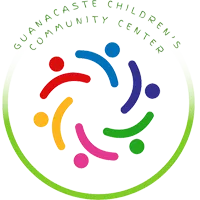Learning Hub
Welcome to the Learning Hub! Explore expert insights and tips on child development, education, and wellness.

10 Easy and Fun Montessori Activities to Try at Home
Incorporating Montessori principles at home can be a rewarding and fun experience for both you and your child. Here are ten practical and engaging activities that you can easily integrate into your daily routine, fostering independence, creativity, and a love for learning.
1. Practical Life Skills: Setting the Table
Teach your child to set the table for meals. This activity helps develop fine motor skills, a sense of responsibility, and attention to detail. Start with simple tasks like placing utensils and progress to arranging napkins and cups.
Steps:
Show your child where each item goes.
Encourage them to place items independently.
Praise their efforts and correct gently.
2. DIY Sensory Bins
Create sensory bins filled with different textures like rice, beans, sand, and water beads. Sensory play supports cognitive growth, fine motor skills, and is incredibly fun for children.
Materials:
A shallow bin or container.
Various textured materials (rice, beans, sand, etc.).
Small toys or tools for scooping and sorting.
3. Gardening Together
Involve your child in gardening activities. This hands-on experience teaches them about nature, responsibility, and patience. They can help with planting seeds, watering plants, and harvesting vegetables.
Activities:
Plant seeds in small pots.
Water plants regularly.
Harvest and discuss the growth process.
4. Cooking Simple Recipes
Cooking with your child is a fantastic way to teach practical life skills, math, and science concepts. Start with easy recipes like sandwiches, salads, or baking cookies.
Steps:
Choose a simple recipe.
Let your child measure ingredients.
Guide them through mixing and assembling.
5. Sorting and Categorizing Toys
Help your child develop organizational skills by sorting and categorizing their toys. This activity enhances cognitive skills and teaches them how to maintain order.
Activities:
Sort toys by type (cars, dolls, blocks).
Categorize by color or size.
Create labels for toy bins.
6. Nature Walks and Collections
Go on nature walks and encourage your child to collect leaves, rocks, or flowers. Discuss different types of plants and animals, fostering an appreciation for nature and science.
Activities:
Collect natural items.
Discuss findings.
Create a nature journal.
7. DIY Art Projects
Set up a mini art station with paper, crayons, paint, and other craft supplies. Allow your child to explore their creativity through drawing, painting, and crafting.
Projects:
Drawing and coloring.
Painting with watercolors.
Creating collages with natural materials.
8. Building Blocks and Construction Play
Provide various building blocks and construction toys. These activities enhance spatial awareness, problem-solving skills, and creativity.
Materials:
Building blocks (LEGO, wooden blocks).
Construction sets.
Encourage free building and following instructions.
9. Reading and Storytelling Time
Establish a regular reading routine. Reading together enhances language skills, imagination, and a love for books. Create a cozy reading nook for this activity.
Activities:
Read a variety of books.
Encourage your child to tell stories.
Discuss the story and characters.
10. Music and Movement
Incorporate music and movement activities. Singing, dancing, and playing simple instruments like maracas or tambourines support physical development and rhythm.
Activities:
Dance to different types of music.
Sing nursery rhymes and songs.
Play rhythm instruments.
Conclusion
Integrating Montessori principles at home can be simple and enjoyable with these activities. They not only support your child’s development but also create meaningful and fun learning experiences. Try these activities and watch your child thrive in a nurturing, educational environment.
For more information on Montessori education and tips on how to incorporate these activities at home, visit Guanacaste Children’s Community Center (GCCC) to explore their exceptional programs and resources.
FAQs About Montessori Activities at Home
How can I practice Montessori at home? You can practice Montessori at home by setting up a prepared environment, using child-sized furniture and tools, and encouraging independence through practical life activities, sensory play, and creative projects. Start with simple tasks and gradually introduce more complex activities.
What are the activities of Montessori play? Montessori play activities include practical life skills (e.g., pouring, sweeping), sensory activities (e.g., sensory bins, texture exploration), and creative projects (e.g., art, building blocks). These activities are designed to be hands-on and foster independence, concentration, and problem-solving skills.
What activities does Montessori think children learn best? Montessori education believes children learn best through hands-on activities that engage their senses and allow them to explore and experiment. Activities that promote practical life skills, sensory experiences, and creative expression are highly valued in Montessori education.
What are Montessori developmentally appropriate activities? Montessori developmentally appropriate activities are those that match a child's developmental stage and interests. These activities include practical life tasks (e.g., dressing, cooking), sensory activities (e.g., sandpaper letters, color sorting), and academic tasks (e.g., counting beads, puzzle maps).

At Guanacaste Children's Community Center, we offer bilingual Montessori education in a nurturing environment. Located near Tamarindo, Costa Rica, our programs inspire curiosity, creativity, and a love for learning. Join our vibrant community and give your child the opportunity to thrive through nature, hands-on activities, and personalized attention.
@ 2025 Guanacaste Children's Community Center. All Rights Reserved.
